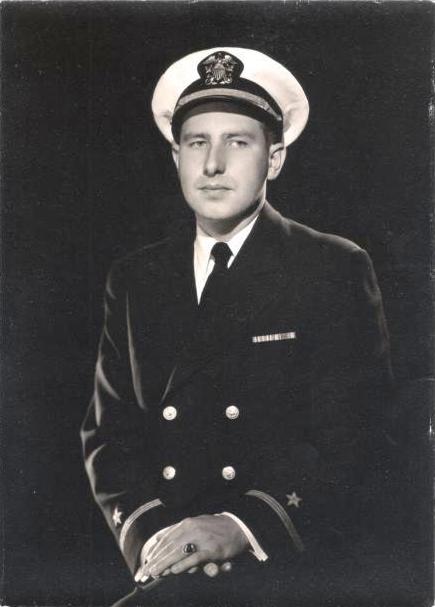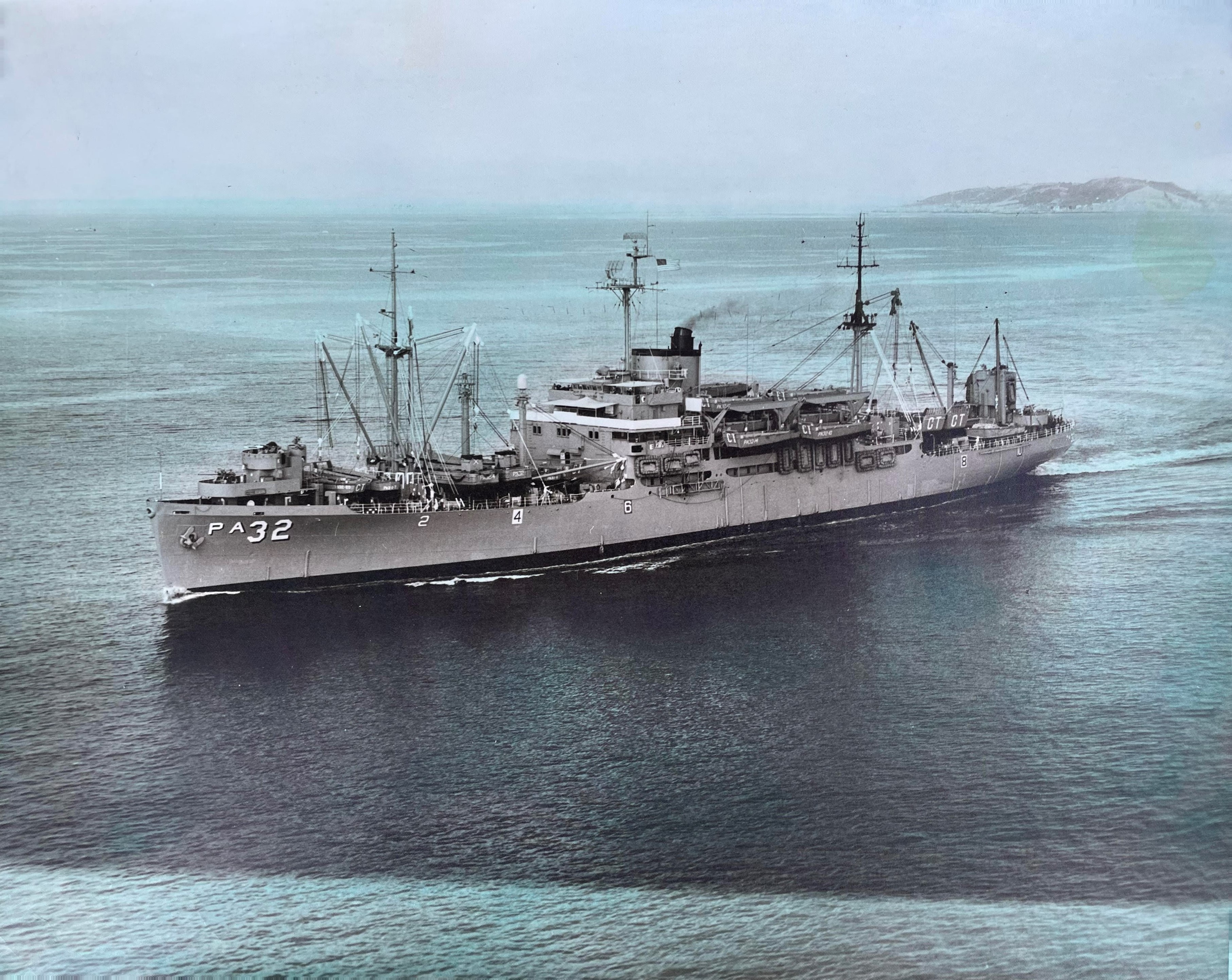The National Archives Catalog has published online access to many US Naval ships’ official deck logs for the 1960s. The links to the Calvert’s deck logs provide detailed information indicating the Calvert’s daily location, movements, and activities.
1960
- January, 1960 – Deck Log Book – https://catalog.archives.gov/id/182418167
- February, 1960 – Deck Log Book – https://catalog.archives.gov/id/182418247
- March, 1960 – Deck Log Book – https://catalog.archives.gov/id/182418309
- April, 1960 – Deck Log Book – https://catalog.archives.gov/id/182418421
- May, 1960 – Deck Log Book – https://catalog.archives.gov/id/182418545
- June, 1960 – Deck Log Book – https://catalog.archives.gov/id/182418673
- July, 1960 – Deck Log Book – https://catalog.archives.gov/id/182418797
- August, 1960 – Deck Log Book – https://catalog.archives.gov/id/182418925
- September, 1960 – Deck Log Book – https://catalog.archives.gov/id/182419055
- October, 1960 – Deck Log Book – https://catalog.archives.gov/id/182419177
- November, 1960 – Deck Log Book – https://catalog.archives.gov/id/182419305
- December, 1960 – Deck Log Book – Not available online
1961
- January, 1961 – Deck Log Book – https://catalog.archives.gov/id/172362697
- February, 1961 – Deck Log Book – https://catalog.archives.gov/id/172362827
- March, 1961 – Deck Log Book – https://catalog.archives.gov/id/172362945
- April, 1961 – Deck Log Book – https://catalog.archives.gov/id/172363073
- May, 1961 – Deck Log Book – https://catalog.archives.gov/id/174030000
- June, 1961 – Deck Log Book – https://catalog.archives.gov/id/174030128
- July, 1961 – Deck Log Book – https://catalog.archives.gov/id/174030252
- August, 1961 – Deck Log Book – https://catalog.archives.gov/id/174030384
- September, 1961 – Deck Log Book – https://catalog.archives.gov/id/174030512
- October, 1961 – Deck Log Book – https://catalog.archives.gov/id/174030636
- November, 1961 – Deck Log Book – https://catalog.archives.gov/id/174030764
- December, 1961 – Deck Log Book – https://catalog.archives.gov/id/174030888
1962
- January, 1962 – Deck Log Book – https://catalog.archives.gov/id/174031016
- February, 1962 – Deck Log Book – https://catalog.archives.gov/id/174031144
- March, 1962 – Deck Log Book – https://catalog.archives.gov/id/172363197
- April, 1962 – Deck Log Book – https://catalog.archives.gov/id/172363323
- May, 1962 – Deck Log Book – https://catalog.archives.gov/id/172363447
- June, 1962 – Deck Log Book – – Not available online
- July, 1962 – Deck Log Book – https://catalog.archives.gov/id/172363575
- August, 1962 – Deck Log Book – https://catalog.archives.gov/id/172363699
- September, 1962 – Deck Log Book – https://catalog.archives.gov/id/172363827
- October, 1962 – Deck Log Book – https://catalog.archives.gov/id/172363949
- November, 1962 – Deck Log Book – Not available online
- December, 1962 – Deck Log Book – Not available online
1963 – None are available online
1964
- January, 1964 – Deck Log Book – Not available online
- February, 1964 – Deck Log Book – https://catalog.archives.gov/id/172364075
- March, 1964 – Deck Log Book – Not available online
- April, 1964 – Deck Log Book – Not available online
- May, 1964 – Deck Log Book – Not available online
- June, 1964 – Deck Log Book – Not available online
- July, 1964 – Deck Log Book – Not available online
- August, 1964 – Deck Log Book – https://catalog.archives.gov/id/172364207
- September, 1964 – Deck Log Book – https://catalog.archives.gov/id/172364332
- October, 1964 – Deck Log Book – https://catalog.archives.gov/id/172364456
- November, 1964 – Deck Log Book – https://catalog.archives.gov/id/172364584
- December, 1964 – Deck Log Book – https://catalog.archives.gov/id/172364708
1965
- January, 1965 – Deck Log Book – https://catalog.archives.gov/id/172364838
- February, 1965 – Deck Log Book – https://catalog.archives.gov/id/172364904
- March, 1965 – Deck Log Book – https://catalog.archives.gov/id/172364964
- April, 1965 – Deck Log Book – https://catalog.archives.gov/id/172365030
- May, 1965 – Deck Log Book – https://catalog.archives.gov/id/172365096
- June, 1965 – Deck Log Book – https://catalog.archives.gov/id/172365162
- July, 1965 – Deck Log Book – https://catalog.archives.gov/id/172365226
- August, 1965 – Deck Log Book – https://catalog.archives.gov/id/172365292
- September, 1965 – Deck Log Book – https://catalog.archives.gov/id/172365358
- October, 1965 – Deck Log Book – https://catalog.archives.gov/id/172365420
- November, 1965 – Deck Log Book – https://catalog.archives.gov/id/172365486
- December, 1965 – Deck Log Book – https://catalog.archives.gov/id/172365550
1966
- January, 1966 – Deck Log Book – https://catalog.archives.gov/id/174322202
- February, 1966 – Deck Log Book – https://catalog.archives.gov/id/174322268
- March, 1966 – Deck Log Book – https://catalog.archives.gov/id/174322330
- April, 1966 – Deck Log Book – https://catalog.archives.gov/id/174322396
- May, 1966 – Deck Log Book – https://catalog.archives.gov/id/174322460
- June, 1966 – Deck Log Book – https://catalog.archives.gov/id/174322526
Please note that selected crew member details, which are part of the public domain, are also captured in these documents.


